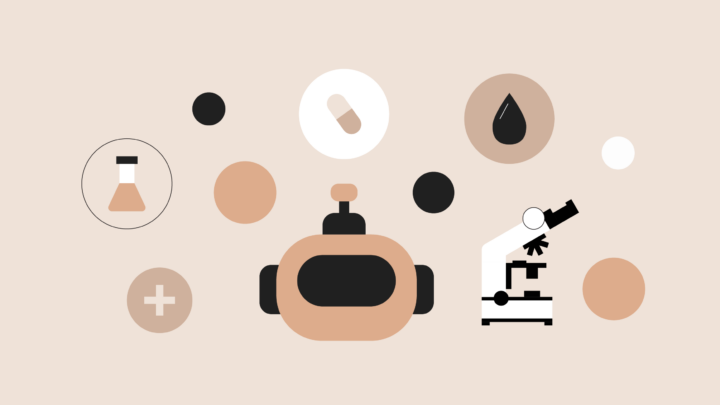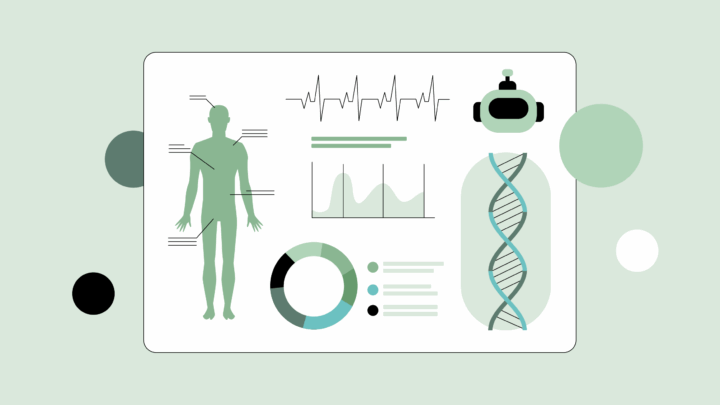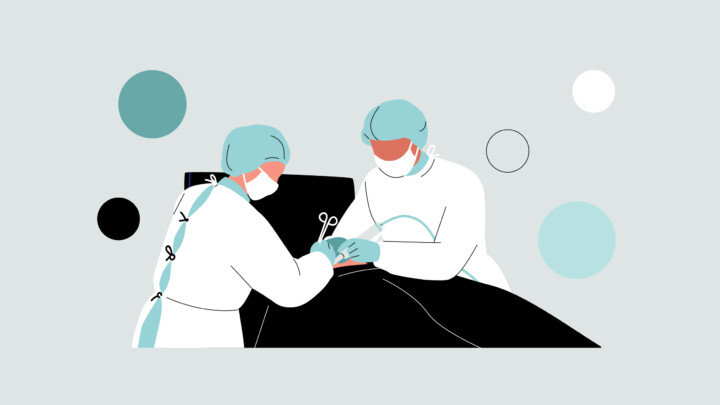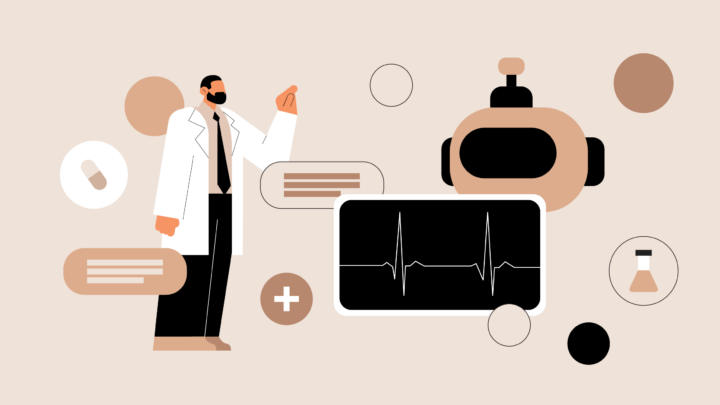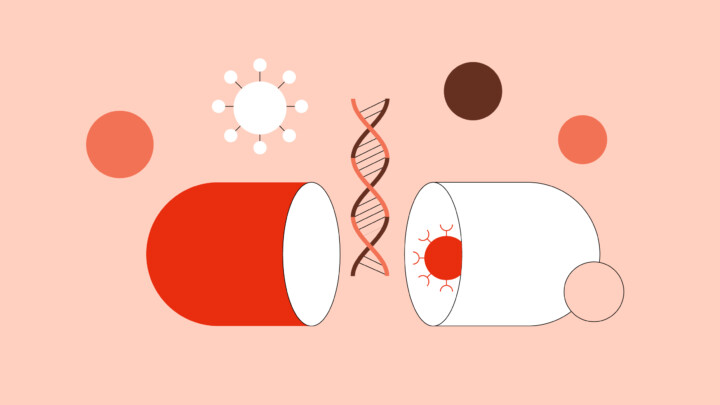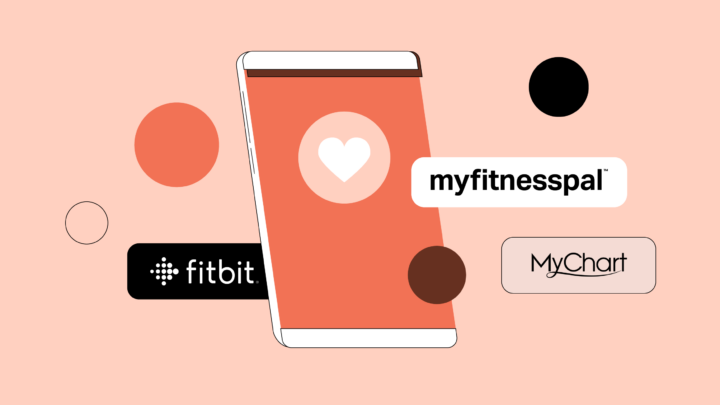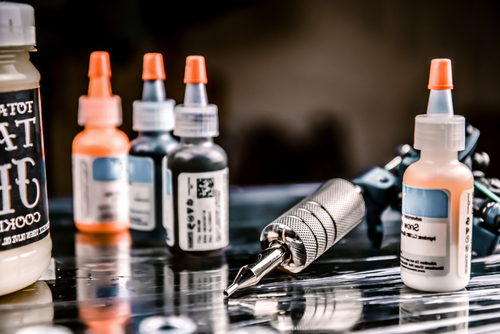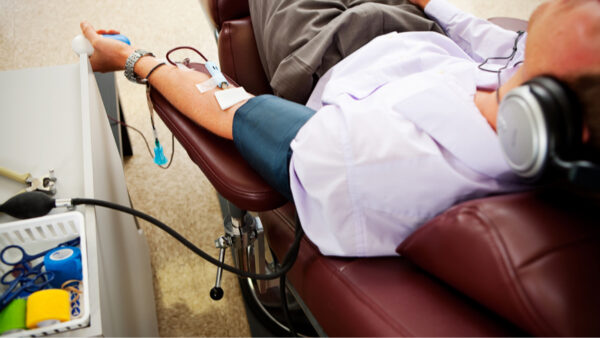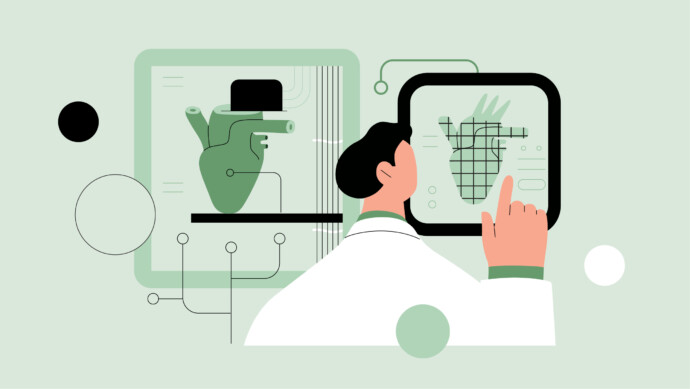
3D printing, which involves “printing” layers of material to create a solid object from a digital model, has transformed medicine. 3D printing dates back to the 1980s, but it’s recently become more cost-effective and widespread.
Doctors on Sermo are enthusiastic about 3D printing’s potential. “3D printing has revolutionized the creation of artificial organs and tissues, offering new opportunities in regenerative medicine and customizing prosthetics, functional organs and tissues are being developed for use in transplants and drug trials, which could reduce the transplant waiting list and improve patient outcomes,” one general practitioner on Sermo writes.
Similarly, another GP states that “robotics and 3D printing are important for diagnoses and procedures, especially those of a surgical nature.”
While 3D printing has already begun transforming how doctors think about patient care, it may evolve to have an even greater impact on healthcare in upcoming years. Keep reading as we detail current applications of 3D printing in medicine, as well as the ways this technology may affect the healthcare industry in the near future.
Applications of 3D printing in medicine today
While researchers continue to explore the potential applications of 3D printing in medicine, some physicians are already using the technology to advance patient care. The most popular applications of this technology in healthcare today include:
Custom prosthetics
Perhaps the most promising application of 3D printing in medicine today is the ability to print affordable and advanced custom prosthetics. According to a 2017 estimation from the World Health Organization, 30 to 40 million people globally require prosthetic services, but only one in 10 of those people have access to those services.
3D printed prosthetics have the potential to revolutionize patient care for amputees, as the process can quickly produce lower-cost and easily customizable prosthetics printed to meet each patient’s exact needs. Common materials used include biocompatible polymers such as thermoplastic polyurethane (TPU), nylon, and acrylonitrile butadiene styrene (ABS), which offer strength, flexibility, and durability suited for wearable devices. Unsurprisingly, in an internal Sermo poll of U.S-based physicians, 72% percent of doctors surveyed said that of all medical applications of 3D printing, customized prosthetics have the greatest potential to improve patient care in the next five years.
Custom 3D-printed prosthetics typically fall under medical device regulations governed by authorities such as the U.S. Food and Drug Administration (FDA). Many prosthetics are considered Class I or II devices, requiring adherence to quality and safety standards, but may benefit from streamlined regulatory pathways especially if used as patient-matched devices. Manufacturers and clinicians must ensure materials and processes comply with biocompatibility, sterilization, and mechanical performance standards before clinical use.
Patient-specific implants
Half of the physicians surveyed by Sermo said that 3D-printed implants have the greatest potential to improve patient care in the next five years. The innovation would allow doctors to quickly and accurately design customized implants for patients, such as for knee and hip replacements, which could potentially reduce surgery time and complications.
Materials commonly include biocompatible metals such as titanium and cobalt-chrome alloys, often printed using Electron Beam Melting (EBM) or Selective Laser Melting (SLM), which allow precise control over implant microarchitecture to promote bone in-growth and reduce weight. The design is based on medical imaging of the patient’s unique anatomy, and virtual scenarios or predictions of potential complications can be done before the implant gets placed. Custom-designed implants also remove the need to alter standard-sized implants, which may improve patient outcomes as the right fit can be achieved the first time.
Current barriers to the adoption of 3D-printed implants in clinical practice include challenges related to the availability and suitability of materials as well as stringent regulatory requirements. While titanium and titanium alloys are widely used and generally well-tolerated, some metal alloys, such as nickel-based alloys, may pose risks due to potential corrosion or ion release in the physiological environment. Ongoing research is focused on developing and optimizing biocompatible materials with appropriate mechanical properties and corrosion resistance for long-term implantation. Regarding regulation, medical implants are typically classified as Class III devices, which necessitates rigorous evaluation and approval by regulatory agencies such as the FDA before clinical use to ensure safety and efficacy.
The case of Paolo Macchiarini, a surgeon who faced serious consequences after implanting unapproved synthetic tracheas, underscores the critical need for stringent regulatory oversight. His downfall illustrates the dangers of rushing unregulated custom implants into clinical practice without thorough evaluation, which can lead to severe patient harm and ethical violations.
Bioprinting tissues
Bioprinting uses living cells (referred to as bio-ink), rather than plastic or metal, to create artificial living tissue in a lab. It’s possible to print organs, blood vessels and even bones that can be used for research purposes. The hope is that this process could even be used to decrease the need for organ transplants in the future. 44% of the surveyed physicians on Sermo think bioprinting is the most promising 3D printing application to improve patient care in the next five years.
While bioprinting of tissues and organs is promising, fully functional transplantable organs printed with 3D technology are still largely experimental and remain in preclinical or very early research phases. More research is needed before it can be used in the operating room, but physicians on Sermo see potential in the technology: “3-D bioprinting can create tissues, organs, and even bones that could be tailored to a patient’s exact anatomical needs, reducing rejection rates for transplants, notes one internal medicine physician. “By creating a faithful replica of the organ to be manipulated, time can be improved, and possible details can be corrected in the surgery,” adds a general practitioner.
Anatomical models for surgical planning
3D printing could revolutionize surgery by allowing doctors to create anatomical models for surgical planning. With the assistance of 3D printers, practitioners can use patient scan data to create precise replicas of patients’ organs to plan for and practice surgeries ahead of time. This gives doctors the ability to rehearse complicated surgeries, helping them gain confidence before the surgery, which has the potential to speed up surgeries, reduce costs, reduce complications, minimize trauma for patients, and improve outcomes. Anatomical models tied with bioprinting tissues as the most promising 3D printing application in the Sermo poll, receiving 44% of votes.
Dental implants and crowns
3D printing could also improve the process of manufacturing dental implants and crowns. In particular, this technology has the potential to improve turnaround, ensuring patients get the care they need in a timely manner. As with other 3D-printed prosthetics, the crowns and implants can also provide a more precise fit, improving cosmetic outcomes and potentially leading to longer-lasting results.
Orthopedic braces and supports
As with prosthetics, many patients who need orthopedic braces and supports aren’t equipped to meet high financial barriers to treatment. Many patients simply cannot afford these patient-specific medical devices, and custom products can take weeks or months to be manufactured. Fortunately, 3D printing can eliminate this problem by making it quick and cost-effective to manufacture custom braces and supports for patients.
Customized surgical instruments
While designing and manufacturing new surgical instruments is usually cost-prohibitive, 3D printing makes it possible to create procedure-specific, and even patient-specific, surgical instruments and cutting guides. With this innovative process, it becomes cost-effective to develop custom instruments for specific procedures, and these instruments can even be tailored to surgeon preferences. For example, in mandibular reconstruction, 3D-printed positioning and cutting guides can be created in-house based on patient CT data. These guides precisely define osteotomy lines, ensure accurate alignment of bone segments, and facilitate reconstruction according to the patient’s unique anatomy, significantly improving surgical precision and outcomes.
These tools can be designed to be ergonomic for each surgeon, reducing fatigue during long, complex procedures. This level of customization then has the potential to streamline workflows and minimize errors, and lead to shorter operating times and faster recovery.
Medical device prototyping
3D printing has also transformed the medical device field by facilitating rapid prototyping. With this technology, medical device companies can now create quick, cost-effective prototypes of medical devices and surgical instruments in-house. This allows them to quickly create accurate prototypes, simplifying testing and speeding up product development.
Hearing aids
3D printers can also manufacture hearing aids. 3D printed hearing aids can offer several unique advantages over traditional production methods, as the technology can create hearing devices that are precisely tailored to an individual’s ear. The enhanced customization not only ensures proper fit, but it can also enhance comfort, improve sound quality and reduce feedback.
Training models for medical students
In addition to helping doctors prepare for surgery, 3D-printed anatomic models could also help train medical students. While students often use cadaveric materials for this purpose, this has raised ethical concerns and is also costly. 3D-printed training models may offer a new and effective substitute by allowing instructors to reproduce complex anatomical structures from high-resolution CT scans, providing a cost-effective solution for these institutions. This technology also provides a more scalable solution. For instance, while one cadaver has one heart, 100 students can view the same 3D printed replica.
What is the future of 3D printing in healthcare?
3D printing has already led to encouraging results in supporting surgery and improving patient care. The demand for the technology could continue to grow in the coming years as new processes develop. Some of the most promising applications of the technology in medicine that researchers are currently studying include the development of 3D printed:
- Synthetic skin: synthetic skin could have a variety of applications, including for the research and testing of cosmetic, chemical and pharmaceutical products. 3D printing living skin could also represent a significant step forward in the treatment of burn victims by simplifying skin grafts.
- Blood vessels: researchers in Korea have created implantable 3D printed blood vessels and successfully implanted them into a rat. The hope is that eventually this process could develop artificial blood vessels needed to treat cardiovascular disease in humans.
- Synthetic bone scaffolds: 3D printers are also being modified to bind chemicals to a ceramic powder, creating scaffolds that promote the growth of bone into any shape. The hope is that this technology can be used to create synthetic bones for hip and knee replacements that are less likely to be rejected and could last longer than current artificial joints.
- Synthetic organs: while further out on the horizon, one of the most promising potential applications of 3D printing in medicine would be the printing of artificial organs that could be used for transplants. Bioprinting organs could make organ replacement less costly and more readily available, and it could potentially reduce rejection rates. “The most promising developments come from research with modified cells and 3D bioprinting, which make it possible to predict that in the future organs may be replaced with artificial tissue created in laboratories,” writes the general practitioner on Sermo.
While early studies show that 3D printing has the potential to revolutionize medicine, many of these applications are still in the early stages of research and development. More systematic studies are needed to determine which type of surgeries, and for which patient characteristics, the impacts of this technology will be the highest.
Additionally, significant barriers could delay the implementation of 3D printing in medicine. When asked about the barriers that could prevent them from implementing this innovation, U.S.-based physicians on Sermo claimed that regulatory and approval challenges (67% of respondents) high cost or lack of funding (60%) and limited access to 3D printing facilities (58%) were the main challenges preventing them from adopting the technology in their practices.
Where 3D printing stands today
3D printing has the potential to revolutionize the medical field by reducing costs for essential medical devices and improving surgical outcomes. As this technology continues to improve, it could further change what is possible in healthcare. However, before medical 3D printing can reach its full potential, more research is needed to explore its applications. As physicians explore ways this technology could impact patient care, Sermo provides a unique space to collaborate and share ideas. By joining the physician-only community, you can talk to doctors around the world about 3D printing and share your ideas for how it could be harnessed in healthcare.
